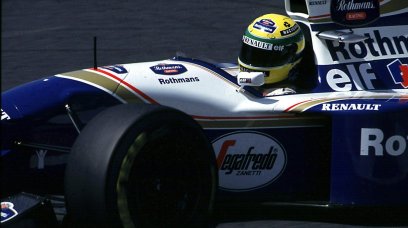Williams reserve driver Jack Aitken believes Spa-Francorchamp's Eau Rouge and Raidillon corners can be made safer by pushing the barriers on the left-hand side of the crest back to give more room if a car crashes. Aitken was racing at the Spa 24 Hours last month when he spun into the barriers at high speed and bounced back into the middle of the track, where he was collected by other cars. He feels that if the barriers were not as close to the racing line, there could be fewer incidents. "Obviously, it's a bit of a sensitive subject because we have had some pretty serious accidents over the last decades, it's always been a danger spot," Aitken told Motorsport.com. "I've thought about a fair bit. In my opinion, I think they've done quite a good job for the most part with what is inherently, a very fast corner with a blind exit. "On the right side it's very open at the top, I don't think there's any major changes that need to be made there and we saw a couple of cars in the Spa 24 hours that did lose it to the right, and that was relatively, completely fine. There's enough space and it's far enough off the track that you're okay. "The problem is with the kind of crash that I had when you hit the barrier on the left, the distance from the middle of Eau Rouge, when you're going up the hill, into that left barrier isn't big enough. You don't have time to slow down. "It's also for the type of accident that I had where you are overcorrecting a slide, the car was still relatively straight for me. But I knew there was no way that I was going to avoid the barrier or have time to turn away from it, because the run-off is just not deep enough. So that's one thing, that it needs to be deeper." Spa-Francorchamps have made plans to increase run-off areas and to add more gravel traps, including at Raidillon, where Aitken had his accident. It's the same part of the track where F2 driver Anthoine Hubert was killed in 2019. Aitken is not sure if adding a gravel trap at Raidillon would help due to the nature of that particular area of the circuit. "Because of it [the barriers] not being deep enough, when you do collide it absorbs the energy and bounces you back out, it puts you right into the firing line," Aitken explained "I've already spoken with a couple of people on the FIA side to try and see if there's anything that I can do from the drivers' perspective just to offer my opinion, prefacing that with, I am not the circuit designer, I don't know what the challenges are with that corner in terms of putting things back and around. "I don't think gravel would have helped on this occasion because travelling 200-250 kilometres an hour, with maybe five to 10 metres of runoff, it's just not enough to slow down and actually it could have made it worse because the dust would have obscured the view even more. "Speaking to the drivers behind me who were involved, that was one of the main issues. They knew there was a big crash because of all the debris but the smoke meant they had no idea where the car was, and with the crest, you can't see that far ahead."
Most read







